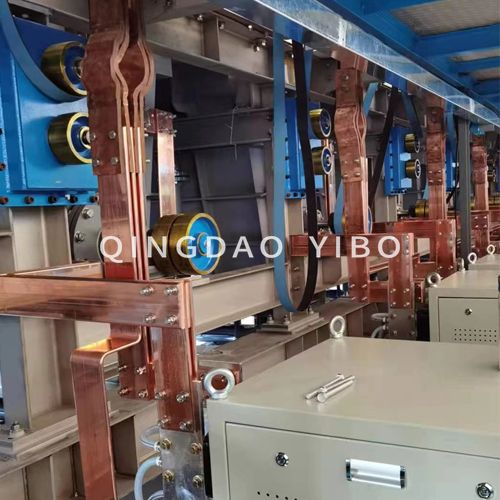Copper-Aluminum Transition Joint: The Key to Reliable Electrical Connections
Copper-Aluminum Transition Joint: The Key to Reliable Electrical Connections
In the realm of electrical systems and power transmission, ensuring secure and efficient connections is paramount. One critical component that plays a vital role in this regard is the copper-aluminum transition joint. This article delves into the significance, types, applications, and benefits of copper-aluminum transition joints, providing valuable insights for professionals and enthusiasts in the electrical field.
What is a Copper-Aluminum Transition Joint?
A copper-aluminum transition joint is a specialized connector designed to facilitate the reliable joining of copper and aluminum electrical conductors. Copper and aluminum are two of the most commonly used materials in electrical wiring and equipment due to their excellent electrical conductivity and abundance. However, these metals have different electrochemical properties, which can lead to issues like galvanic corrosion and poor electrical contact when connected directly. The copper-aluminum transition joint serves as an intermediary, preventing these problems and ensuring a stable and long-lasting electrical connection.
Why Are Copper-Aluminum Transition Joints Necessary?
When copper and aluminum come into direct contact in an electrical system, a galvanic reaction occurs. This reaction is caused by the difference in electrochemical potentials between the two metals. Aluminum has a higher electrochemical potential than copper, making it more susceptible to corrosion. Over time, this corrosion can result in increased electrical resistance at the connection point, leading to overheating, energy losses, and even potential equipment failures. Copper-aluminum transition joints eliminate this galvanic reaction by providing a compatible interface between the two metals, thereby maintaining the integrity and efficiency of the electrical system.
Types of Copper-Aluminum Transition Joints
There are several types of copper-aluminum transition joints available in the market, each designed for specific applications and requirements:
Bimetallic Transition Joints
Bimetallic transition joints are made by bonding copper and aluminum layers together through processes like explosion welding or roll bonding. The copper layer provides excellent electrical conductivity and corrosion resistance, while the aluminum layer offers lightweight and cost-effective properties. These joints are widely used in power transmission lines, substations, and industrial electrical installations.
Compression-Type Transition Joints
Compression-type transition joints utilize mechanical compression to create a secure connection between copper and aluminum conductors. They typically consist of a copper or aluminum sleeve that is compressed around the conductors using specialized tools. This type of joint is known for its simplicity of installation and reliability in various environmental conditions. It is commonly employed in residential and commercial electrical wiring systems.
Soldered Transition Joints
Soldered transition joints involve the use of soldering materials to bond copper and aluminum conductors. The solder creates a conductive bridge between the two metals, ensuring a good electrical connection. However, soldered joints require skilled labor and proper soldering techniques to achieve optimal performance. They are often used in low-voltage applications where precision and reliability are crucial.
Applications of Copper-Aluminum Transition Joints
Copper-aluminum transition joints find extensive applications across diverse industries and sectors:
Power Transmission and Distribution
In power transmission lines and substations, copper-aluminum transition joints are essential for connecting copper busbars to aluminum conductors. This ensures efficient transmission of electrical energy over long distances with minimal losses. The joints also help in accommodating the different thermal expansion coefficients of copper and aluminum, preventing mechanical stress and damage to the conductors.
Industrial Electrical Systems
Industrial facilities often use a combination of copper and aluminum electrical equipment and wiring. Copper-aluminum transition joints are employed in motors, generators, transformers, and control systems to establish reliable connections. Their ability to withstand harsh industrial environments and high electrical loads makes them indispensable in such settings.
Building Construction
In residential and commercial building construction, electrical installations frequently involve both copper and aluminum conductors. Copper-aluminum transition joints are used in panel boards, switchgear, and wiring systems to ensure safe and efficient distribution of electricity throughout the building.
Benefits of Using Copper-Aluminum Transition Joints
The use of copper-aluminum transition joints offers numerous advantages:
Enhanced Electrical Performance
By preventing galvanic corrosion and ensuring a stable electrical connection, these joints help maintain low electrical resistance and minimize energy losses. This results in improved overall electrical performance and efficiency of the system.
Extended Service Life
The elimination of corrosion and mechanical stress at the connection points significantly extends the service life of electrical components and conductors. This reduces the frequency of maintenance and replacement, saving both time and costs in the long run.
Versatility and Adaptability
Copper-aluminum transition joints are available in various types and configurations, making them suitable for a wide range of applications and conductor sizes. They can be easily installed and adapted to different electrical systems, providing flexibility and convenience to engineers and technicians.
Cost-Effectiveness
Although copper is generally more expensive than aluminum, the use of copper-aluminum transition joints allows for the optimal utilization of both materials. Aluminum can be employed for its lightweight and cost advantages in certain parts of the system, while copper can be used where higher conductivity and corrosion resistance are required. The transition joints bridge these two materials effectively, offering a cost-effective solution for electrical installations.
Conclusion
Copper-aluminum transition joints are indispensable components in modern electrical systems. They address the challenges posed by the direct connection of copper and aluminum conductors, ensuring reliable, efficient, and long-lasting electrical connections. With their diverse types, wide range of applications, and numerous benefits, these joints contribute significantly to the performance and safety of electrical infrastructure. For professionals involved in electrical engineering, understanding and utilizing copper-aluminum transition joints is essential in designing and maintaining robust and efficient electrical systems.


